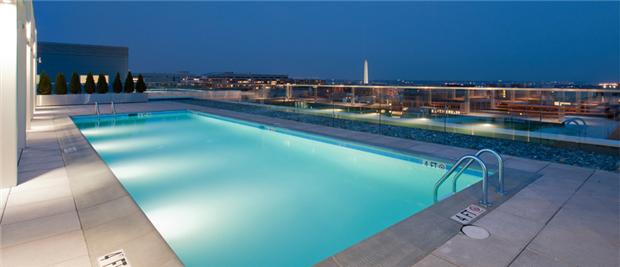
First, let me be clear: Tomorrow is April Fools, not today. This is real.
There are luxury apartment buildings in Washington, DC, trying to lure renters with communal puppies.
That sounds like the makings of a tiny tombstone engraved with “Tragedy of the Commons,” if you ask me. Who’s going to take responsibility for a dog that lives in the hallway?
In any case, the shared dog is just one of many tricks and teases DC developers are using to entice renters, according to Jonathan O’Connell of the Washington Post.
“When the boom started a few years ago, a nicely finished kitchen or a landscaped courtyard made a project stand out,” O’Connell writes. “Now those are considered baseline essentials if a building is going to compete.”
The new must-have amenities include rooftop pools, pet salons, soundproof music “practice jam-rooms,” 24-hour resident concierge services, dry-cleaning valet, a calendar full of activities for residents, customized cupcakes and a signature cocktail at a nearby bar. Oh yes, and "a six-month-old miniature English bulldog named Emmy will take up residence in the sleek new lobby of 2M, one of dozens of apartment buildings being completed in the region this year."
This is in a city where the average rent for a two-bedroom is over $2,000.
It’s conventional wisdom among urbanists that increasing density will improve housing affordability. It’s considered a natural, market-based solution for rising rents, as opposed to city regulations that artificially insert below-market-rate housing into high-priced neighborhoods. But developers in DC are showing their utter unwillingness to allow the market to edge prices down.
Even faced with a spate of post-recession overbuilding -- there are 39,122 apartments being planned or built in the Washington area right now, the most ever recorded, according to McConnell -- developers are loathe to lower rents even 3 or 4 percent, as some are being forced to do. More than 18,000 apartments will come online this year, according to the research firm Delta Associates, “a 69 percent increase over the 10,671 units that were completed in 2013.”
Builders are banking on the rising popularity of urban living among millennials and the culture at large, and preferences toward renting in particular, to justify their investments. All arrows point to them being right about those trends. But their drive to up-sell luxury units with absurd gimmicks like shared dogs points to their disconnect with the people who want to rent those apartments -- not all of whom are so wealthy they'll drop hard-earned cash at the mere mention of a spa or dry-cleaning dropoff.
Developers need to “overbuild” so that all kinds of people can afford to live in the city. Decreasing rents aren’t a sign that they haven’t customized enough cupcakes. It’s a sign that the market is doing what it’s supposed to do.
The developer mentality described in the Post article is what social justice activists decry when they criticize gentrification. Urbanists prefer to trust that developers increasing housing stock are doing the city a favor by boosting the supply of a scarce public good. But if builders are going to make sure that that public good is exclusively available to rich, young professionals, they’re proving the social justice activists right and the urbanists wrong.
The Post’s headline refers to “the breakneck race to lease Washington apartments.” That race is easily won. Anyone reading this article will intuitively understand that: Lower the rents and people will be fighting over these apartments.





